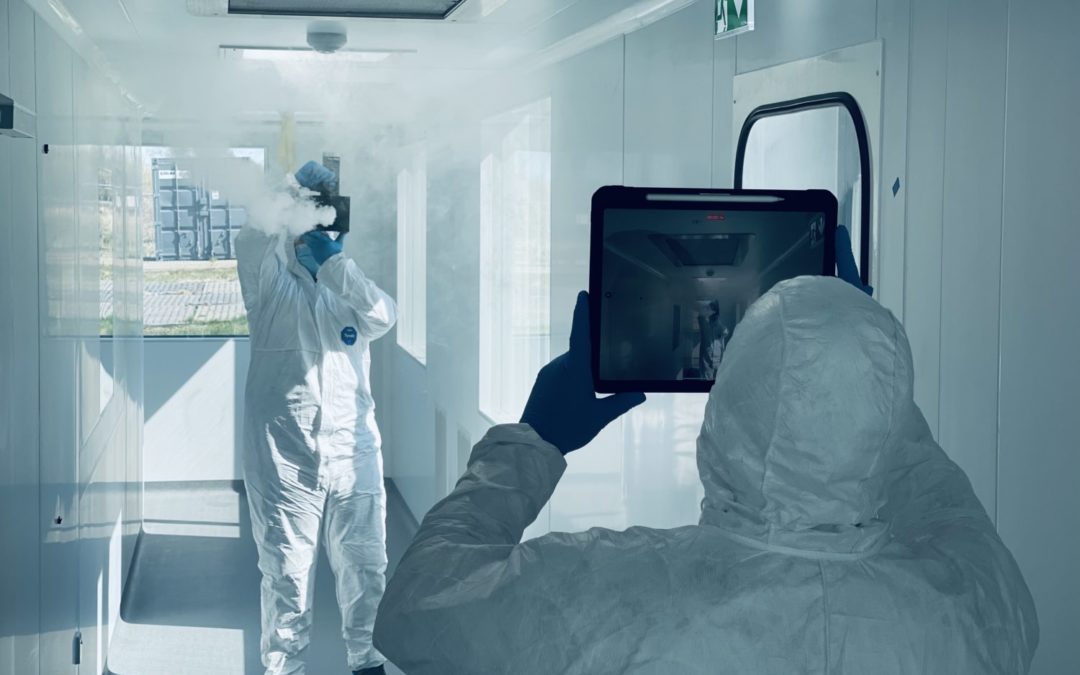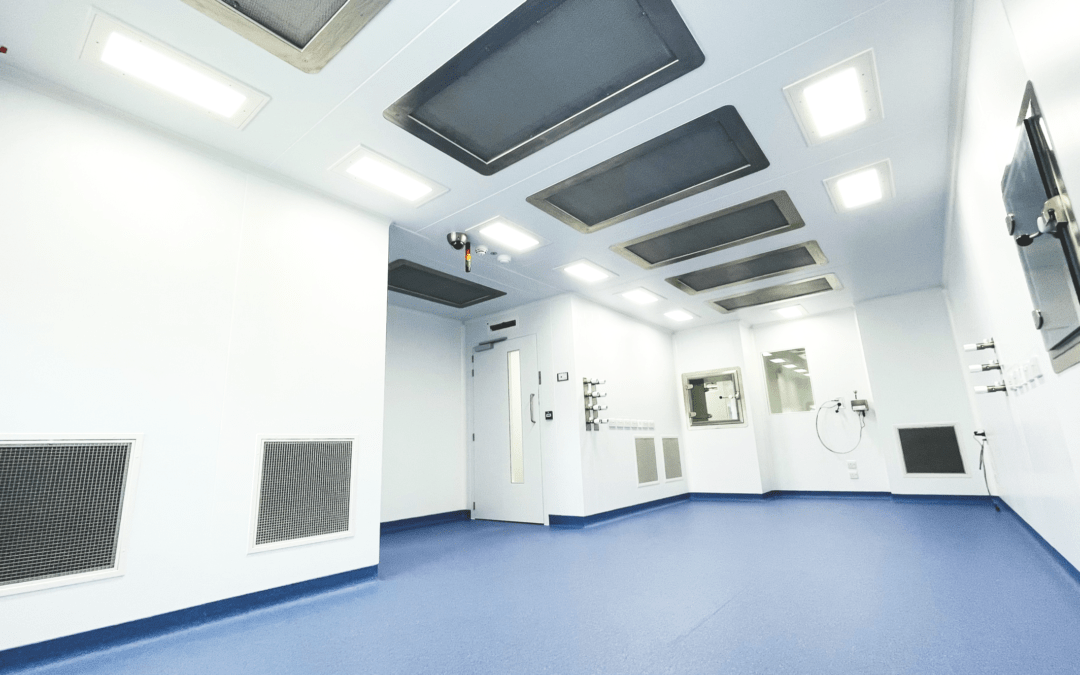
What Is USP 825, and How Does It Affect Radiopharmaceutical Cleanroom Design?
Radiopharmaceutical Cleanroom Design?
USP standards are developed by the United States Pharmacopeia (USP) to protect patient and worker safety while developing, packaging, distributing and consuming medicines and dietary supplements. Therefore, they must be adhered to in many cleanroom applications involving radio pharmaceutical development or manufacturing.
Some of the most common USP standards in the cleanroom industry are USP 797 and USP 800 — but in this article, we’ll be discussing a more specialized one: USP 825.
What Is USP 825?
USP General Chapter 825 is the USP standard that provides the minimum requirements for preparing, compounding, dispensing, and repackaging both sterile and nonsterile radiopharmaceutical drugs. It describes facilities and engineering controls, personnel training and qualifications, and procedural requirements for processing radiopharmaceuticals in various clinical settings. All of these requirements work together to ensure that workers are protected while handling these hazardous drugs and that patients are protected while consuming them.
Who Needs to Follow USP 825?
If you’re working with radiopharmaceutical development or manufacturing, you likely need to follow USP 825. That includes a variety of healthcare personnel and environments, including:
Personnel
- Authorized nuclear pharmacists (ANPs)
- Authorized user (AU) physicians
- Individuals in training and under supervision, like students, technicians, and trainees
Environments
- State-licensed nuclear pharmacies
- Federal-licensed nuclear pharmacies
- Nuclear medicine departments in hospitals and other specialized healthcare clinics
There are some exceptions, however. USP 825 doesn’t apply to the following processes and environments:
- Manufacturing approved radiopharmaceuticals in FDA-registered manufacturing establishments
- Manufacturing radiopharmaceuticals as investigational agents
Why Was USP 825 Developed?
Radiopharmaceutical drugs have been around for over 70 years, but their development is really starting to take off and lead to big changes in the industry. Due to their radioactive nature, radiopharmaceuticals need to be managed and manufactured differently than traditional medicines.
USP 825 permits three environments for sterile radiopharmaceutical handling: segregated radiopharmaceutical processing areas, ambient hot air labs, and cleanroom suites. The appropriate environment depends on the particular radiopharmaceutical processing task at hand.
In a radiopharmaceutical cleanroom environment, control is needed to ensure the safety and effectiveness of the drugs, as well as to protect the lives of workers who are handling them.
The unique characteristics of radiopharmaceutical drugs and cleanrooms make complying with the longstanding USP 797 and 800 standards a difficult, unproductive, and sometimes unsafe task. This is why nuclear medicine professionals have called for a move beyond USP 797 and 800 and the creation of a new radiopharmaceutical-specific standard, USP 825. This way, more specific policies and requirements could be established to protect the safety and repeatability of radiopharmaceutical processes.
However, it’s important to note that USP 825 has not yet been implemented due to a series of appeals during the publication process. Therefore, it’s currently used as a guideline for radiopharmaceutical cleanroom design, not a requirement.
A Few Specific USP 825 Cleanroom Requirements
So what exactly makes USP 825 different from USP 797 and 800? It reflects the unique characteristics of radioactive drugs, emphasizes the importance of following radiation safety protocols, and provides information on how to balance the short lifespan of radiopharmaceutical drugs for clinical use and the importance of proper aseptic handling practices. It also offers guidance on how to place absorption pads in hoods, how to handle sharp utensils during compounding, and how to position radiation-measuring devices in hoods during compounding.
To break it down more, USP 825 discusses safe practices involving:
- Radiation safety (time, distance, shielding, contamination control)
- Personnel qualification, training, and technique
- Hand hygiene & garbing
- Regular sanitation & cleanliness protocol
Build Your USP 825 Cleanroom With Angstrom Technology
Planning to install a radiopharmaceutical cleanroom in your facility? At Angstrom Technology, we can help design and install one that meets your specifications and complies with industry standards. To get started, contact our team online.






